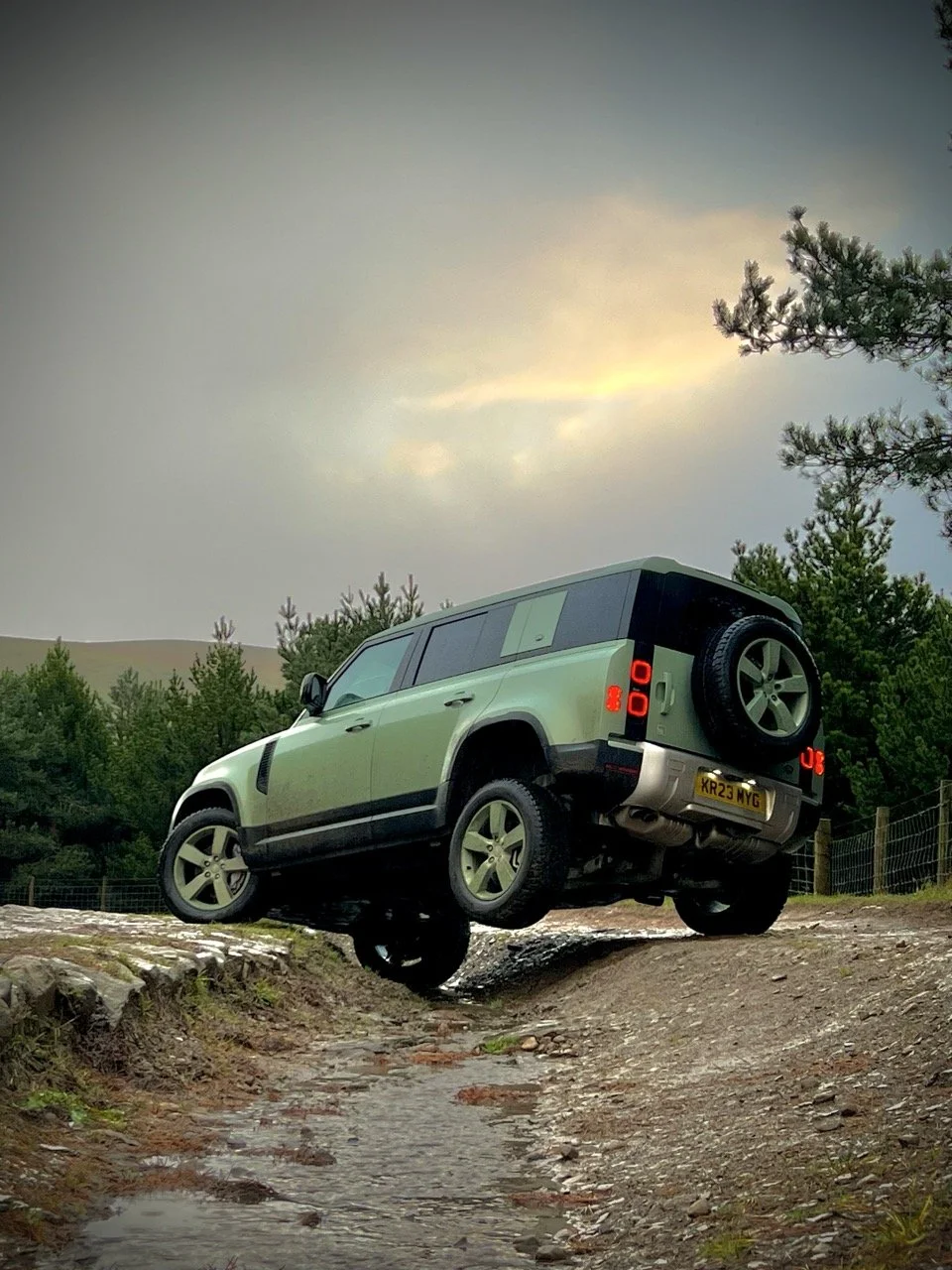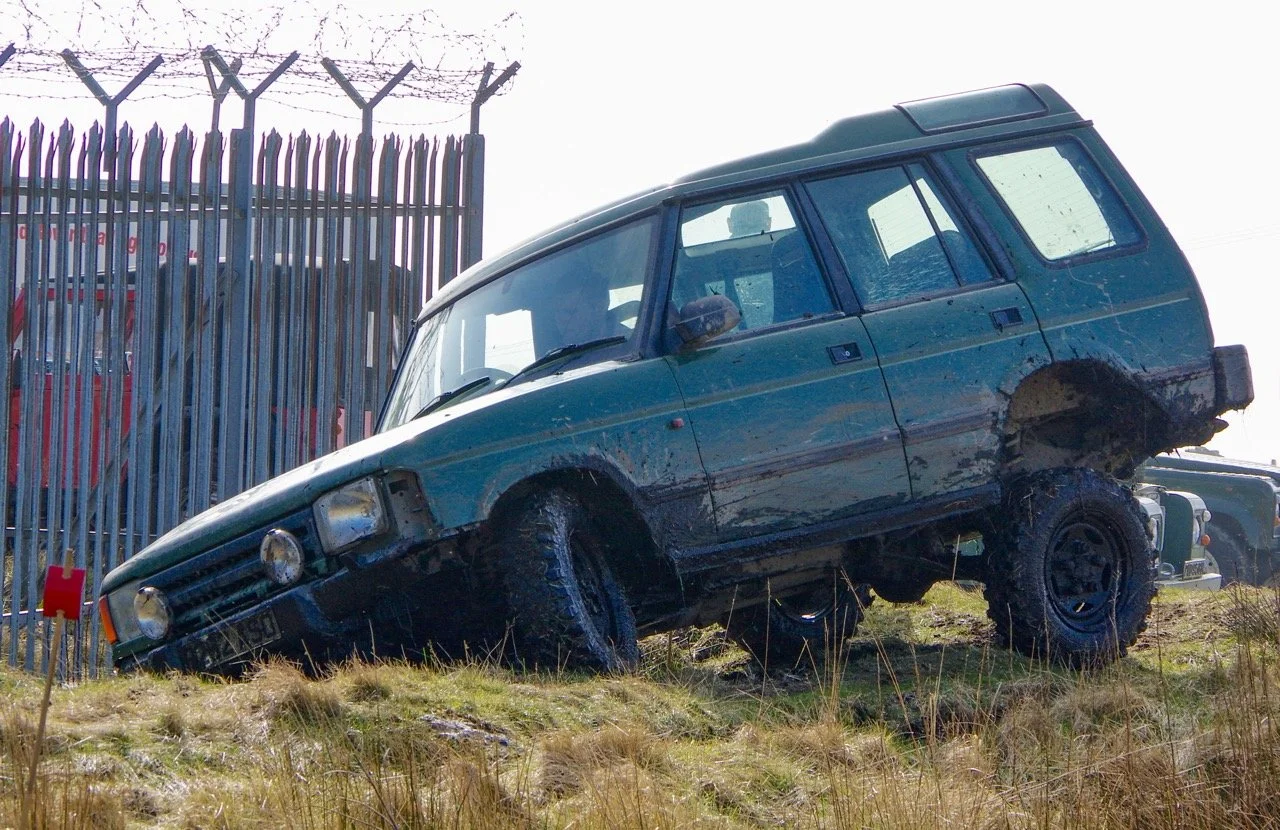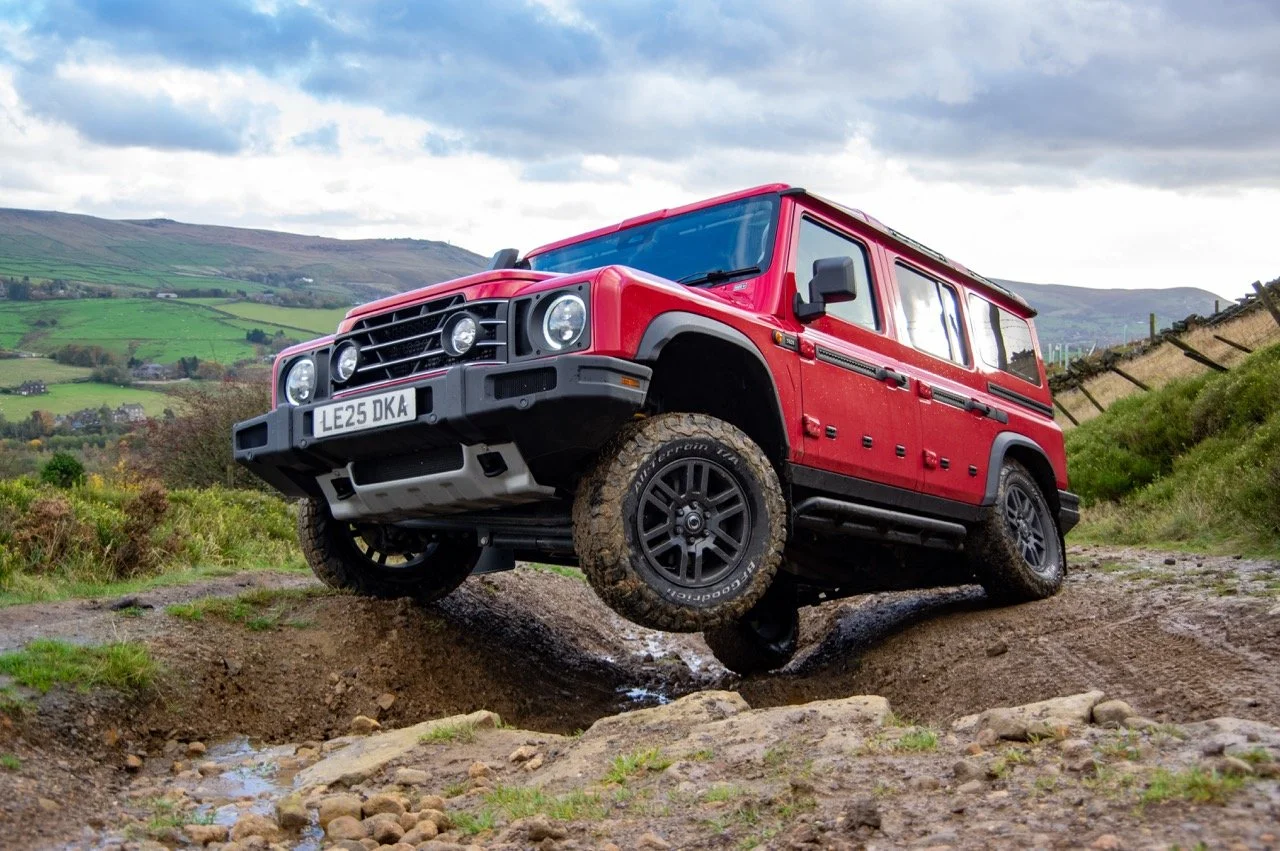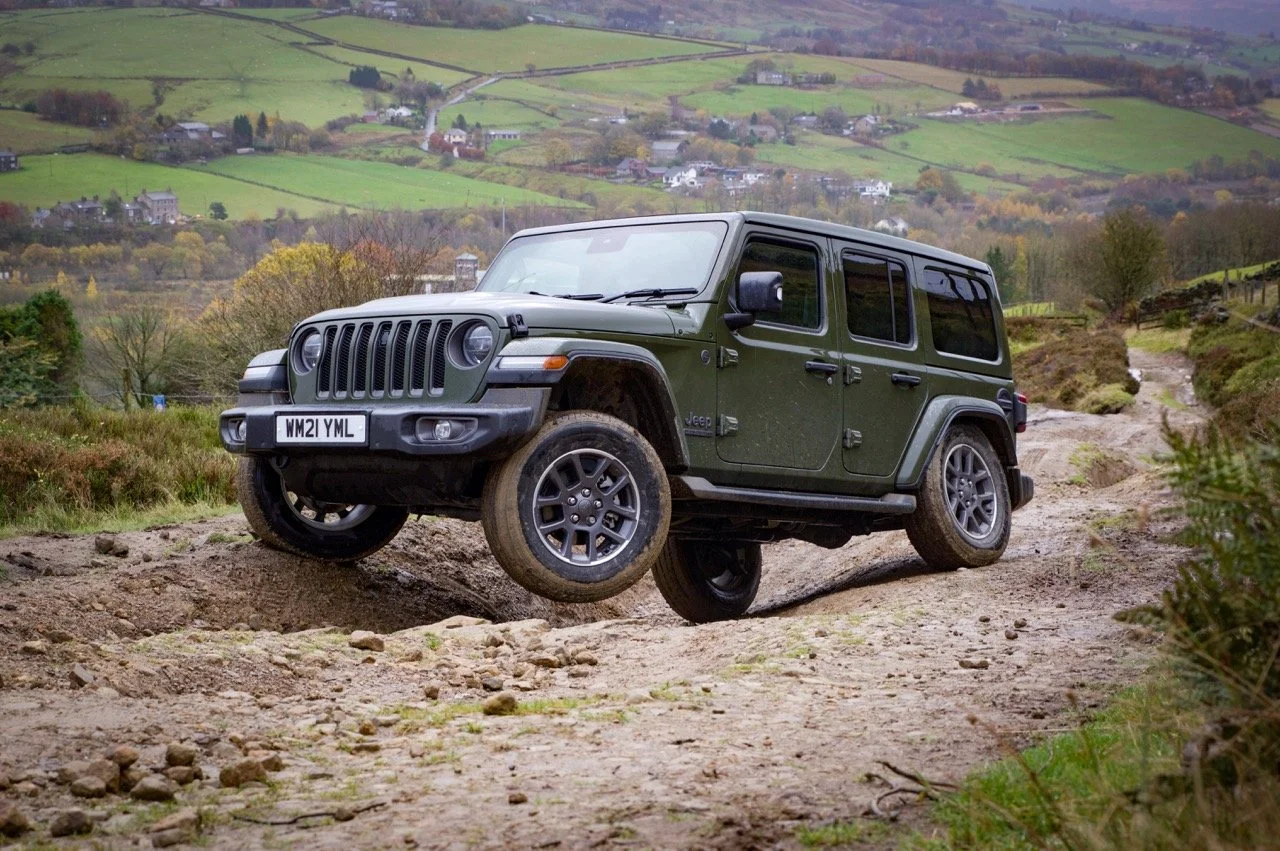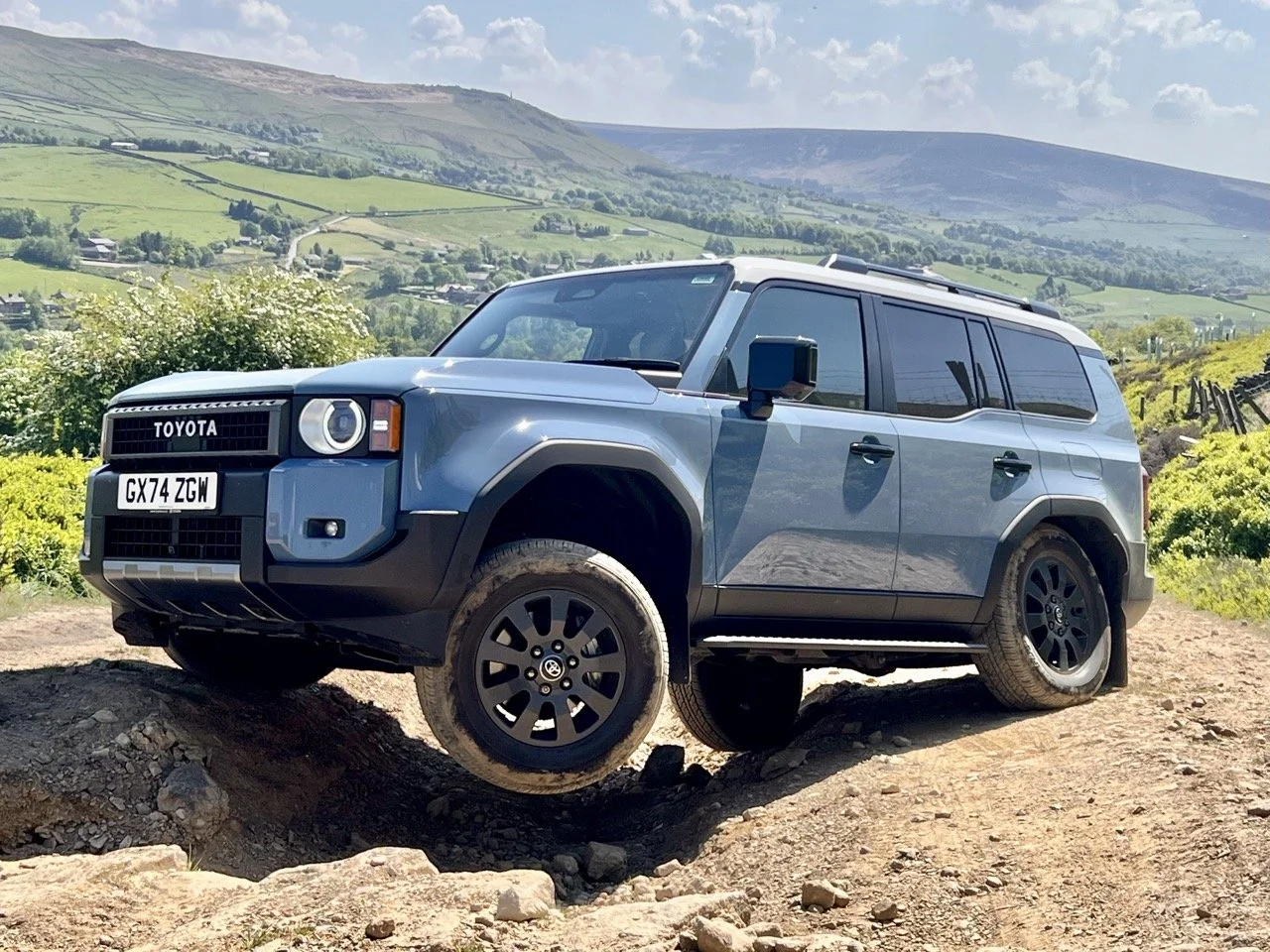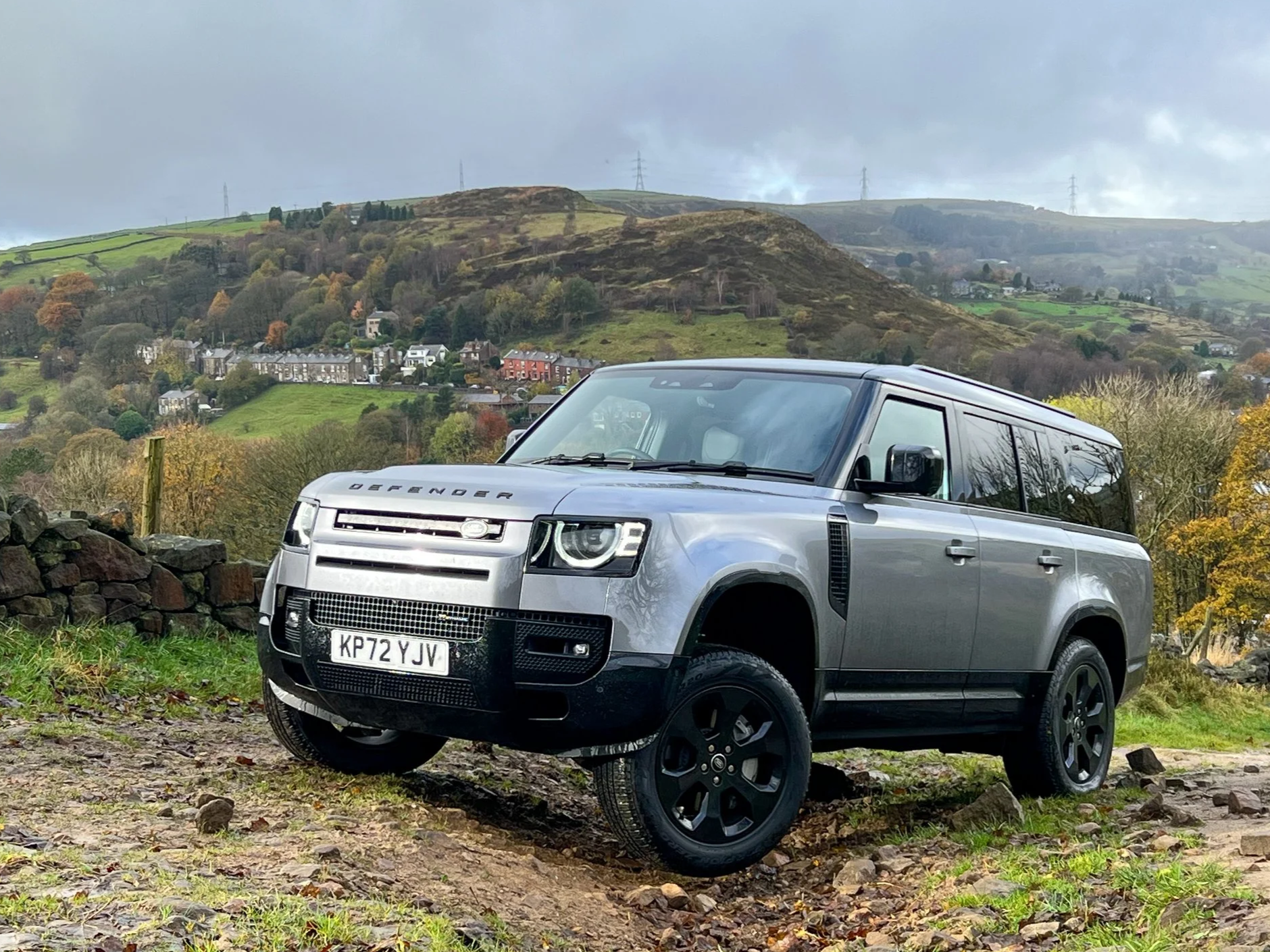Do We Really Need Suspension Flex Anymore?
So, I posted the above photo on our Facebook page (@themudlifemag), the other week of a shiny new Defender 130 doing what Defenders do best - showing off. It was halfway up a green-lane with a dramatic sky behind it… and as you can see, one wheel, bless it, was hanging in mid-air.
Within minutes the comments rolled in. “Does it even have suspension?!” “More flex in a Tesco trolley!” “You wouldn’t see my old Disco doing that!”
Of course, a lot was said in jest, but you’d think I’d let all the air out of someone’s 37” mud terrains!
But it did get me thinking. The outrage was all down to one thing - suspension articulation, or in this case, the lack of it. Back in the good old days, a wheel in the air was a sign your axle wasn’t working hard enough. Now, it’s apparently a sign your suspension’s too clever for its own good.
So, the question is: with all the traction aids packed into modern 4x4s, do we really need suspension flex anymore?
When Flex Was King
Let’s wind the clock back to when 4x4s were built from girders, hope, and the occasional swear word.
Classic Range Rovers, early Discoverys, 110s and Defenders - all had solid axles and coil springs. They were simple, tough, and relied entirely on mechanical grip.
Back then, traction control wasn’t a thing. You had maybe a centre diff lock if you were lucky, and that was it. Once two opposing wheels lifted off the ground, you were going nowhere fast - unless your mate in the Series IIA had a tow rope and a smug grin.
That’s why articulation mattered. The more your axles could twist and flex, the more your tyres stayed in contact with the ground. More contact meant more traction. Simple.
The downside, of course, was that those big, long-travel coil springs didn’t exactly lend themselves to cornering prowess. Early Discoverys and Range Rovers were a bit wallowy, to say the least. You could turn the wheel in a Tesco car park and still be waiting for the body to stop leaning by the time you’d parked. It was part of their charm, but it wasn’t exactly refined.
Enter the Age of Electronics
Then came progress.
Manufacturers realised that while rock crawlers and farmers loved a bit of axle flex, most 4x4 buyers spent 95% of their time on tarmac. Cue the rise of independent suspension, traction control, and electronic diffs.
Instead of relying purely on suspension geometry to keep tyres in contact with the ground, cars started using sensors, ECUs and brake modulation to do the job for them.
If a wheel lifted, the system would instantly apply the brake to that wheel, forcing torque to the opposite side where grip remained. Add in terrain response modes and electronic centre/rear diff locks, and suddenly even a relatively stiff-sprung SUV could crawl up stuff that would have stumped an old-school solid-axle truck.
It’s clever. incredibly so. And it’s fast. A good traction system can react in milliseconds, far quicker than a mechanical diff or your right foot ever could.
So, you might see a wheel hanging in the air and think, “that’s useless,” but in reality, the computer’s already sorted it out before you’ve had time to frown.
Form vs Function
The irony is that modern 4x4s often look worse off-road because of their limited articulation - but perform better.
Take the new Defender in that photo. One wheel’s doing its best impression of an EasyJet landing, but the other three have traction, the system’s balancing torque, and it just keeps going. In fact, all the other 3 wheel are firmly on the ground.
If you tried that same obstacle in an old Defender 90 or Discovery 1 without locking diffs, you’d probably spin to a halt halfway up, one front wheel and one rear wheel polishing the rocks while the others twiddle helplessly.
That’s why modern systems are so effective: they allow stiffer suspension, which improves on-road comfort, steering precision and body control, while still maintaining impressive off-road capability.
You can have your cake and drive it to work comfortably, too.
Here’s a good example of that: Deux Smurf, our 1996 Toyota Hilux Surf really did struggle getting to the same angle - I used far too much momentum, and possible damage, getting in that position. For reference she has a rear solid axle with coils, and coil spring double-wishbone independent front suspension and a centre locking diff.
But Some Still Keep It Old-School
Of course, not everyone’s gone full electronic.
‘Proper’ off-roaders like the INEOS Grenadier, Jeep Wrangler, and Mercedes G-Wagen still use coil springs and solid axles (at least at the rear in the G’s case).
Why? Because for serious off-roading - think expedition use, heavy towing, and long-term durability, solid axles still have advantages. They’re stronger, simpler, and offer predictable articulation without relying on electronics that can get a bit flustered in deep mud or water.
That said, even these “old-school” machines aren’t entirely analogue anymore. The G-Wagen has a suite of traction aids, the Wrangler has hill descent and brake-lock systems, and the Grenadier’s ABS-based traction control is superb.
So even in the world of solid axles, the silicon chips are doing their bit. And besides, even these are still susceptible to lifting a wheel!
Flex vs Tech: The Pub Debate
If you want to start a fight in a pub full of off-roaders, just bring up the words “independent suspension.”
There’s a romantic attachment to articulation, and fair enough, it looks brilliant. Nothing says “proper 4x4” like a photo of your truck climbing a rock with its axle twisted like a liquorice stick.
But while it looks impressive, the reality is that clever traction control now does the same job with less drama - and less need for suspension travel.
Even serious off-road competitions have evolved. Where once articulation was the deciding factor, now it’s all about tyre choice, ground clearance, and how smart your traction system is.
Sure, a locked and flexy Defender looks the part, but a modern Prado, Disco 5 or Defender 110 will quietly walk the same course while keeping your coffee upright in its cupholder.
The Real Test: The Defender Photo
Back to that photo.
Yes, the Defender’s front wheel is airborne. Yes, it looks a bit odd compared to an old 110 with a live axle drooping gracefully into the rut.
But here’s the thing, it still drove through. Effortlessly. No wheelspin, no drama, no hand signals from your mate shouting “stop, you’re lifting!”
It’s all down to how far technology has come. The suspension doesn’t need to keep every wheel on the ground anymore. The electronics are smart enough to keep you moving regardless.
That’s why the new Defender, despite its independent suspension and electronic wizardry, is still one of the most capable off-road vehicles on sale. It just does it differently.
Conclusion: Long Live the Flex (Sort Of)
So, do we still need suspension articulation?
Not really. Modern 4x4s don’t rely on it like their ancestors did. Today’s traction systems, diff locks and terrain modes make it largely redundant.
But, and it’s a big but, there’s still something deeply satisfying about watching a proper coil-sprung axle stretch and twist its way over a boulder. It’s mechanical poetry. It’s honest. And personally, I’m happier driving a coil sprung 4x4.
So while the new generation of electronically controlled SUVs may be technically superior, they’ll never quite stir the soul in the same way as an old-school Defender or 80 Series Land Cruiser doing the suspension splits.
Still, as much as I love flex, I can’t deny progress. If a computer can get me through a tricky section without spilling my brew, that’s a win in my book.
After all, when you’re halfway up a green lane in the rain, you don’t really care whether it’s your axle or your ECU doing the hard work - as long as you keep moving forward.
Now, fellow Mud Lifers, let me have your views, and don’t be shy!


